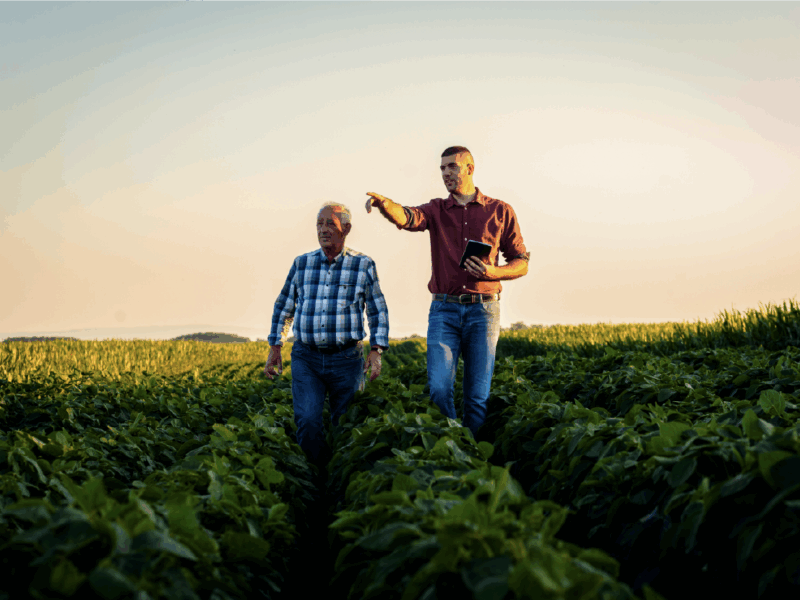
5 Things Ag Sales Leaders Need to Consider for 2026
3-Minute Read Time
 By Corbett Kull, Founder and CEO, CamoAg
By Corbett Kull, Founder and CEO, CamoAg
The agribusiness landscape is rapidly shifting with the backdrop of market turbulence, trade instability, uncertain regulatory impacts, and evolving customer preferences. As ag sales leaders prepare their teams for a potentially bumpy 2026, relying on lengthy planning cycles and imprecise customer data is no longer sustainable. In this environment, success in ag sales requires faster planning and proactively engaging the right farmer customers.
For leaders supplying inputs, equipment, or services to grower operations, here are the top five strategic initiatives to focus on now:
1. Sharpen Your Focus on Your Top Growers In an increasingly tight market, capturing the customers that deeply matter—often identified as the “Top 20%”—is crucial for survival and growth. Sales organizations must look beyond sheer size or existing relationships to identify which operations are exhibiting growth and reinvestment. For example, in CamoAg, you can assess signals such as land purchases, trucking operations expansion, equipment financing, and subsidy payments to gauge a grower’s growth trajectory and business vitality. Focus additional effort and resources on these high-potential accoun 2. Shift from Annual Planning to Continuous Cycle Management The reliance on a single annual plan is often inflexible to current market dynamics and customer needs. Today’s environment, marked by fluctuating commodity prices and high pressure to prove ROI, demands quicker decision-making. We’ve recently seen Bayer Crop Science, for example, move its organization to quarterly “cycle planning.” This strategic shift means being able to gather more real-time field and sales data for more immediate feedback on performance. This enables adjustments to be made that can have impact on a quarterly rather than annual basis. For your 2026 planning, ensure your teams have the data tools and authority to adapt their strategies throughout the year. 3. Use Data to Your Advantage A persistent challenge in agribusiness is the imprecision of data; even first-party customer records can be disjointed or siloed across systems. At the same time, the data doesn’t need to be perfect to be highly valuable. In 2026, prioritize integrating data pipelines and providing access to data important to sales conversations and targeted marketing. The aim is to provide teams with tools they’ll actually want to use and enrich their understanding of actual farming operations. Accurate and easy-to-use tools translate directly into sales confidence and increased win rates. Plus, this helps reduce dependency on tribal knowledge and provides a more accurate picture to leadership and sales enablement teams. 4. Drive Coordination Between Sales and Marketing Ag sales leaders consistently cite the disconnect between sales and marketing teams as a major hurdle. Sales personnel often feel disconnected from marketing efforts, questioning how campaigns contribute to their success. To maximize effectiveness, sales and marketing teams must coordinate in more proactive ways. Marketing needs to understand how to “soften the beaches” with effective product messaging and touchpoints before a salesperson pulls into the driveway. By creating a platform where both teams can view unified data and coordinated action plans, you ensure marketing dollars are dropped in the right area, allowing sales to move quickly to substantive conversations. 5. Empower Sales Teams with the Right Info The best tools an ag salesperson traditionally has is their truck and field maps. Success in 2026 means moving beyond that. The CamoAg platform provides unified producer intelligence to enrich contacts and understand territory opportunities. CamoAg integrates public, licensed, and proprietary first-party data (like CRM data) into a geospatially-referenced Producer Graph. This provides a unified view of farm operations, allowing commercial teams to gain actionable insights and leave no stone unturned. CamoAg’s Territory and Market Analysis suite enables instant filtering and pivoting on customer cohorts based on metrics like crop mix and grower growth score. Plus, the new CamoAg iPhone app ensures sales reps in the truck can access contact lists and mapped farms with no friction, seamlessly linking analysis to execution. Leveraging this kind of intelligence ensures you can efficiently capture the highest-value opportunities in your market.